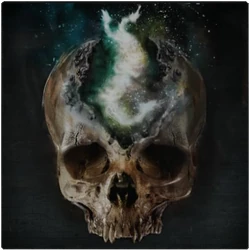| Madman's Knowledge | |||
|---|---|---|---|

| |||
| Max No. Held | 99 | ||
| Max Stored | 99 | ||
| Usage Type | Finite | ||
| - | |||
| Attribute Bonus | |||
| Attribute Requirement | |||
| Found | |||
| Random loot. | |||
| Notes | Gain +1 Insight. | ||
Madman's Knowledge is a consumable in Bloodborne.
Description
In-Game Description
- Skull of a madman touched by the wisdom of the Great Ones.
- Use to gain Insight.
- Making contact with eldritch wisdom is a blessing, for even if it drives one mad, it allows one to serve a grander purpose, for posterity.
Availability
- looted from random corpses
- often found in locations when Key Items and Runes have already been looted.
- very rare drop from Celestial Children and the Child of Rom
Use
- Gain +1 Insight.
Notes
- It is good to hoard as many of these skulls as one can to then invest in the more expensive items sold at the Insight Bath Messenger.
- There is a more powerful variant of this item called, Great One's Wisdom.
Trivia
- The sprite that manifests itself from the skull, resembles a slug or invertabrate being, similar to the Pearl Slugs or Augur of Ebrietas.
- Though it is unclear how the Hunter acquires insight from this item, it seems that if a person who dies after being "touched by the wisdom of a Great One", or "making contact with Eldritch wisdom", has its effect remain in his/her skull, even after death. And upon smashing it with the hands, the Hunter is catching a glimpse of the Cosmos itself, thus gaining Insight.
- The wisdom-in-folly as described by this item is similar to what madness isportrayed in the Renaissance. French philosopher Michel Foucault depicts this in the first part of his book Madness and Civilization: A History of Insanity in the Age of Reason : In the Renaissance the mad were portrayed in art as possessing a kind of wisdom – a knowledge of the limits of our world – and portrayed in literature as revealing the distinction between what men are and what they pretend to be. Renaissance art and literature depicted the mad as engaged with the reasonable while representing the mysterious forces of cosmic tragedy, but the Renaissance also marked the beginning of an objective description of reason and unreason (as though seen from above) compared with the more intimate medieval descriptions from within society.
